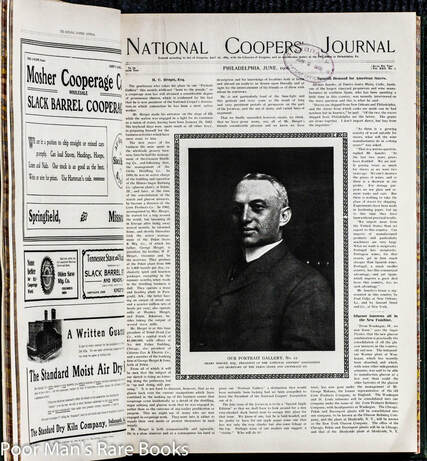
By Rebecca Conrad
Have you ever heard “The Beer Barrel Polka?” How about “Roll out the Barrel?” Barrels were such an integral part of life that many songs were written about them. There are also many sayings such as “He is a barrel of laughs” that reference them. We even use the expression “stave off” which refers to the wood pieces used in the barrels. Barrels were used to store essentials such as flour, sugar, and salt. They were very important in the production of beer, whiskey, wine and other liquors. The type of wood used in them was crucial because they lent some of the flavor to the final product. Where did all these barrels come from?
A search of the 1850 Census for the area shows many men listed as coopers. The skill was passed down from father to son. The listing for Jacob Wastler, aged 68, and his son, Jacob, aged 25, shows them both with cooper listed as their occupation. The cooper Joseph Stottlemyer, took an apprentice named Goodlow Hayes into his household and trained him. John Wachter, John Haynes and Henry Gaver were others in the area manufacturing barrels.
The Gaver family was well-known for their cooperage skills. The History of Frederick County, Vol 1 by Thomas John Chew Williams and Folger McKinsey tells of John T. Gaver. He was the great-grandson of the John Gaver who donated land for the church for which Church Hill is named. John T. Gaver’s father was John P. Gaver, who purchased 121 acres of timber land and spent summers peeling bark and getting out materials for his barrel making enterprise. He was so successful that he was able to purchase an additional 60 acres of land.
These barrels were so critical that there was even a magazine called the National Cooper’s Journal that proudly declared itself "Devoted to the Cooperage Industry; A Paper of Great Value to All Stave, Hoop, Heading and Liner Manufacturers; To All Makers and Users of Barrels, Kegs, Casks, Tubs, Pails, Machinery and Mill Supplies." It began publishing in the 1890s and continued into the mid 1900s.
All of this makes me long to have been there when you could sit at the general store, playing checkers on an old cracker barrel and watching little girls roll the hoops down the streets. Ponder on this the next time you hear of politicians "pork-barreling." Just don’t try going over Niagara Falls in one!
Have you ever heard “The Beer Barrel Polka?” How about “Roll out the Barrel?” Barrels were such an integral part of life that many songs were written about them. There are also many sayings such as “He is a barrel of laughs” that reference them. We even use the expression “stave off” which refers to the wood pieces used in the barrels. Barrels were used to store essentials such as flour, sugar, and salt. They were very important in the production of beer, whiskey, wine and other liquors. The type of wood used in them was crucial because they lent some of the flavor to the final product. Where did all these barrels come from?
A search of the 1850 Census for the area shows many men listed as coopers. The skill was passed down from father to son. The listing for Jacob Wastler, aged 68, and his son, Jacob, aged 25, shows them both with cooper listed as their occupation. The cooper Joseph Stottlemyer, took an apprentice named Goodlow Hayes into his household and trained him. John Wachter, John Haynes and Henry Gaver were others in the area manufacturing barrels.
The Gaver family was well-known for their cooperage skills. The History of Frederick County, Vol 1 by Thomas John Chew Williams and Folger McKinsey tells of John T. Gaver. He was the great-grandson of the John Gaver who donated land for the church for which Church Hill is named. John T. Gaver’s father was John P. Gaver, who purchased 121 acres of timber land and spent summers peeling bark and getting out materials for his barrel making enterprise. He was so successful that he was able to purchase an additional 60 acres of land.
These barrels were so critical that there was even a magazine called the National Cooper’s Journal that proudly declared itself "Devoted to the Cooperage Industry; A Paper of Great Value to All Stave, Hoop, Heading and Liner Manufacturers; To All Makers and Users of Barrels, Kegs, Casks, Tubs, Pails, Machinery and Mill Supplies." It began publishing in the 1890s and continued into the mid 1900s.
All of this makes me long to have been there when you could sit at the general store, playing checkers on an old cracker barrel and watching little girls roll the hoops down the streets. Ponder on this the next time you hear of politicians "pork-barreling." Just don’t try going over Niagara Falls in one!
 RSS Feed
RSS Feed